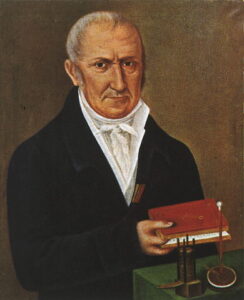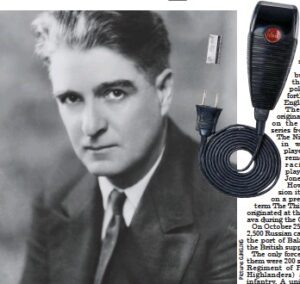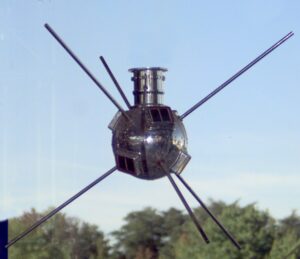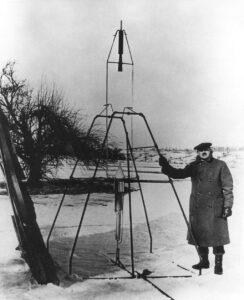The First Battery
Alessandro Volta sends a letter to Joseph Banks, president of the Royal Society of London, describing his “electric pile”. This was the first device that could form a steady flow of electricity, now recognized as the first practical battery. Later called the “Voltaic Pile”, the entire reason Volta created the device was to prove another Italian scientist wrong. Luigi Galvani had incorrectly believed that frog muscles could generate electricity. Volta believed that the frog legs Galvani was using was simply reacting to electricity and set out to create proof. Regardless, within mere weeks the importance of this first battery was realized which allowed many further scientific advancements to be possible, such as electrochemistry. Recognizing the importance of his work, including the Voltaic Pile, the electrical unit of the Volt is named in Volta’s honor.
IBM.com and sun.com Registered
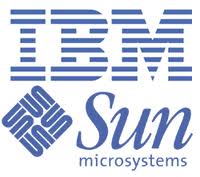
The domains ibm.com and sun.com come online. These domains are considered the 11th and 12th oldest domains in history.
Sydney Harbor Bridge Opens
The Sydney Harbor Bridge first opens to traffic. Nicknamed “The Coathanger” because of its arch design, it spans 503m across Sydney Harbor and is the world’s tallest steel arch bridge at 134m high. Along with the harbor and the Sydney Opera House, the bridge forms part of the now legendary view of Sydney. The bridge took 1,400 workers and 8 years to complete, yet it took the government of Australia 56 years (until 1988) to fully pay off the cost of building the bridge.
Arcade Game of Many Firsts
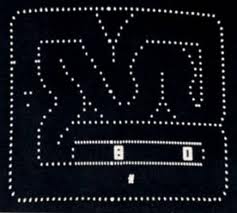
Atari Introduces Gran Trak 10. It is the first arcade game to use solid state read-only memory (ROM) to store sprites for each car, the game timer, the race track, and the score. As such, it’s the the first game to have defined characters rather than mathematically manipulated dots. The game’s controls, which include a four-position gear shifter, a steering wheel, and two foot pedals, are also all firsts for arcade games.
The First Practical Electric Razor
Jacob Schick’s 2nd commercial design of an electric razor goes on sale. His first attempt, which went on sale in 1929, was an awkward design with the electric motor connected by a cable to the shaving head. Not surprisingly that model didn’t sell well. Schick had to mortgage his home to keep his company going. This new version put the motor inside the shaving head making it much more convenient. Even though it went on sale during the Great Depression, Schick managed to sell 3000 units that year at $25 each (close to $400 in today’s money) and 1.5 million by 1937, creating the electric razor industry.
Apple Sues Microsoft for Copyright Infringement
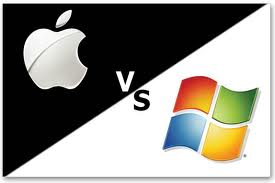
Apple Computer famously sues Microsoft Corporation for copyright infringement in its Windows operating system.
In November of 1985, after Apple’s board pushed out Steve Jobs, Microsoft released Windows 1.0 and Apple threatened to sue since they believed that Microsoft had stolen several design elements of the Macintosh operating system. Bill Gates took advantage of then Apple CEO John Scully’s lack of technology vision to get Apple to license certain parts of its Macintosh GUI to Microsoft. Scully did not foresee that the initial rudimentary version of Windows would be much of a threat of competing with the Macintosh operating system. The deal also ensured that Microsoft would continue to develop Word and Excel for Macintosh. However, when Microsoft released Windows 2.0 in December of 1997 and it had much more similarity to the look and feel of the Macintosh, Apple proceeded with a lawsuit.
What Apple’s lawyers failed to notice was that the license agreed to in 1985 covered all future Microsoft software and not just Windows 1.0. Therefore it was ruled that most of Apple’s copyright claims were covered by the license agreement. After a number of appeals, the legal battle ended when the Supreme Court denied Apple’s final appeal on February 21, 1995.
However, ongoing infringement questions regarding the graphical user interface were finally settled once and for all when Apple and Microsoft signed their famous cooperative agreement in August 1997. One reason that Microsoft agreed to the 1997 cross-licensing deal (in which it was rumored that Microsoft paid Apple up to $2 billion) was Apple’s increasingly large patent portfolio. Apple was allegedly preparing a multi-billion dollar lawsuit against Microsoft, in addition to their QuickTime patent infringement lawsuit filed in 1994. Apple began amassing their patent portfolio largely in response to their loss of this 1988 copyright infringement lawsuit, since they had not patented many of the original Macintosh operating system elements. This led to many other technology companies following suit and the technology patent “arms race” prevalent today.
Vanguard 1 Launched
The American satellite Vanguard 1 is launched. About the size of a grapefruit, Vanguard 1 was the 2nd American satellite launched and 4th man-made object in Earth orbit, following Sputnik 1, Sputnik 2, and Explorer 1. It was the first satellite to have solar power, highest object launched at the time, and currently holds the record for the oldest man-made object still in orbit. Vanguard 1 is expected to stay in orbit until the late 22nd century.
Mac OS X Server 1.0 Released
Mac OS X Server 1.0 is released. This was the first version of Mac OS X available as the desktop version would not be released until just over a year later on March 24, 2001.
Derived from the NeXTSTEP technology that Apple acquired in its purchase of Steve Jobs’ company NeXT (which also brought back Jobs as an advisor and eventually CEO) Mac OS X Server 1.0 is important in history as the first shipping example of what would become the Mac OS X operating system (later OS X and then macOS), which was not only a major advancement for the Apple Macintosh platform but would also form the basis of Apple’s future iOS and iPadOS operating system. However, this original 1.0 release was fairly rough around the edges and was met with mixed reviews due to various technical limitations and interface oddities due to the not yet completed transition from the NeXTSTEP interface model.
The First Wiki

The worlds first Wiki, WikiWikiWeb is gets its start as Ward Cunningham sends an e-mail inviting people to add and edit content. Cunningham officially launches WikiWikiWeb 9 days later on March 25th.
A Wiki is a database that can be a community collaboration. Rather than calling his creation “quick-web”, Cunningham said the inspiration for the name Wiki came from the Wiki Wiki shuttle bus he learned of during a trip to Hawaii, “wiki wiki” meaning “quick” or “fast” in the Hawaiian language. Six years later, Wikipedia is launched, although Cunningham has no official involvement.
First Liquid-Fueled Rocket Launched
Robert Goddard, now considered the father of modern rocketry, successfully launched the world’s first liquid-fueled rocket in Auburn, Massachusetts. The rocket reached an altitude of 41 feet in 2 seconds at a speed of about 60 miles per hour.
The concept of using liquid as fuel allowed the advancement of rocket technology to the point where space travel was made possible. Goddard died in 1945 before his vision of space travel became a reality, however NASA acknowledged his contributions by naming the Goddard Space Flight Center after him.

